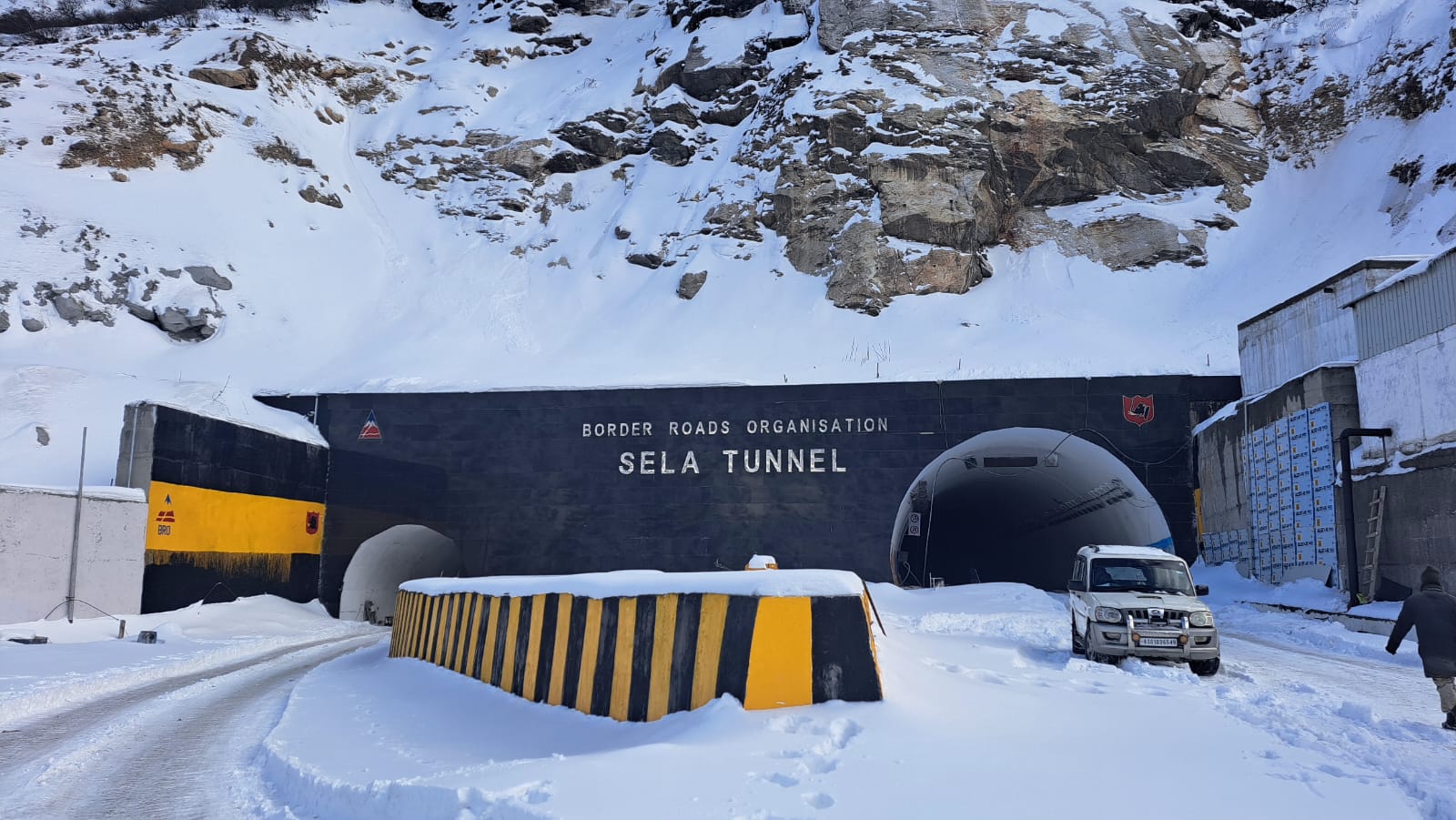Sela Tunnel, the world’s longest bi-lane tunnel was recently inaugurated in Sela Pass, Tawang district, Arunachal Pradesh, India, by Prime Minister Narendra Modi. The inauguration comes approximately 5 years after the tunnel’s foundation stone was laid back on February 9, 2019.
The project was carried out in two phases, the excavation and the lining phase, where the tunnel walls were reinforced with concrete. The first blast took place on October 31, 2019, marking the beginning of the 1st phase of the project, the excavation phase.
Four years and a few months later, despite challenges during the COVID-19 pandemic and adverse weather conditions, the project was completed at a total cost of ₹825 crore. The project utilized the New Austrian Tunneling Method (NATM), a modern technique that allows for efficient tunnelling in challenging geological conditions.
Sela Tunnel consists of two tunnels, Tunnel 1 and Tunnel 2. Tunnel 1 stretches 980 meters as a single tube tunnel while Tunnel 2 spans 1,555 meters as a twin tube tunnel. The tunnel also features jet fan ventilation, firefighting equipment and SCADA-controlled monitoring systems just to mention a few.

In addition to being the world’s longest bi-lane tunnel, Sela Tunnel is India’s highest mountain tunnel road. It is situated at an altitude of 13,000 feet (3,962 meters) just below the 13,800 feet (4,200 meters) high Sela Pass on National Highway 13 that connects Dirang and Tawang.
Noteworthy, the tunnel’s location below the snow line ensures that it remains accessible throughout the year, overcoming the challenges posed by heavy snowfall and landslides that often block the existing road over the Sela Pass.
Significance of the world’s longest bi-lane tunnel
The world’s longest bi-lane tunnel was developed mainly to provide all-weather connectivity. The all-weather connectivity provided by the tunnel will thus greatly improve the safety and accessibility of the Tawang region of Arunachal Pradesh, particularly during the harsh winter months.
Consequently, the tunnel is expected to boost economic and socio-economic development in the area by facilitating trade, tourism, and access to essential services such as healthcare and education. Moreover, the tunnel is expected to serve as a lifeline during natural calamities, enabling faster evacuation and relief efforts.

Furthermore, the Sela Tunnel holds immense strategic importance for India owing to its location near the Line of Actual Control (LAC) with China. It will therefore provide all-weather connectivity to Tawang and other forward areas, enabling the quick mobilization of troops, weapons, and logistics in case of emergencies.
By reducing the travel time between Tezpur and Tawang by 60 minutes, the world’s longest bi-lane tunnel will significantly enhance the Indian Army’s operational readiness and response capabilities in the region.
Other infrastructure projects that complement the Sela Tunnel
The world’s longest bi-lane tunnel and India’s highest mountain tunnel road are part of a larger infrastructure push that involves the development and construction of several other tunnels and roads in a bid to strengthen India’s border infrastructure.
These other projects include the Nechiphu tunnel, located on the same Balipara-Charduar-Tawang (BCT) road, and the Arunachal Frontier Highway, a 2,000 km long road project along the McMahon Line.
Also Read
T-50: India’s longest transportation tunnel is now open
Mumbai Trans Harbour Link, the longest sea bridge in India, inaugurated
Thailand to build a land bridge between the Indian and Pacific Oceans
